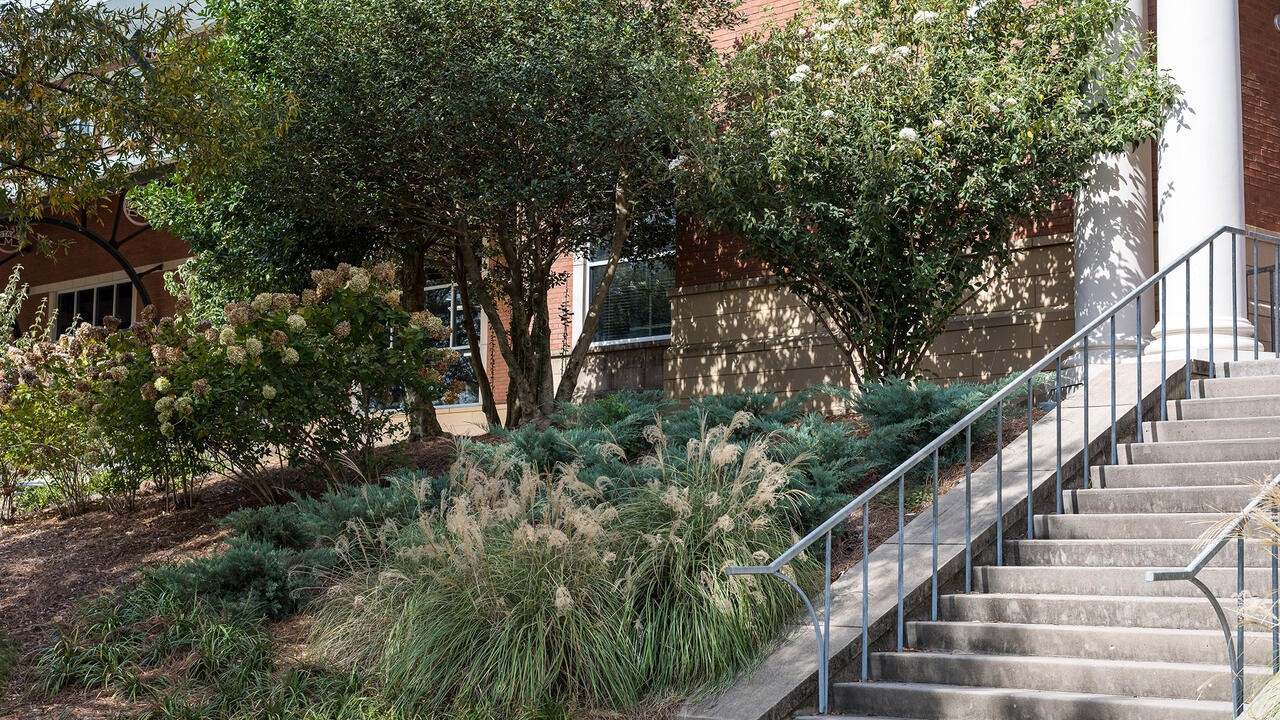STARKVILLE, Miss. -- One man’s landscape architectural legacy at Mississippi State University has allowed generations of home and professional gardeners to learn from industry-leading professionals about how to beautify their own spaces.
This year marked the 68th Edward C. Martin Landscape Symposium hosted by MSU Extension Service, the MSU Department of Landscape Architecture and Garden Clubs of Mississippi Inc. Started in 1957, the event is named for Martin, who helped establish the MSU Department of Landscape Architecture and served 45 years at MSU.
“The goal of this symposium is to learn more about gardening and ways to sustainably garden,” said Melinda Causey, president of Garden Clubs of Mississippi.
Bob Brzuszek, retired Extension landscape architect who has directed the symposium for the past 18 years, said each event focuses on natural landscapes and native plants, in addition to a wide range of other topics.
“The Martin Symposium serves to educate the public on residential landscape design, and is most often attended by gardeners, Master Gardeners, students and landscape professionals,” Brzuszek said.
This year’s event featured speakers Charlie Landreth, Carol Reese and Richard Harkess.
Landreth, president of 35 Degrees North Landscape Services in Brevard, North Carolina, discussed the importance of asking “why here” when creating a landscape.
“I look at landscape problems all day long, and look at what works and what doesn’t work,” Landreth said. “The site analysis must take into account three groups of factors: the human use, on-site conditions and off-site impacts.”
Landreth explained the rationale behind decisions and the end results of several projects. He also covered a variety of topics such as pathway and water feature design.
He said pathways do not have to be like interstates, but can be a slow, meandering experience that allows users to appreciate a space. Water features are complicated, and although they can enhance a landscape, they are “needy little systems.”
Landreth also shared that many landscaping projects require professional involvement.
“The hazards of ‘do it yourself’ are that you make decisions that match your ability and not based on what needs to be done,” he said.
Landreth encouraged attendees to look for ideas wherever they go, noting how design requirements are met in public spaces.
Reese, an Extension horticulturist who retired from the University of Tennessee, discussed the debate surrounding native and non-native plants.
“Categorical statements are almost always untrue about people and plants,” Reese said. “Let’s embrace all plants that benefit. I’m talking about not excluding non-natives in the landscape. Should we limit useful plants on the basis of origins?”
Part of the challenge in defining plants as native or non-native has to do with the natural movement of plants and animals across the globe over history.
“A plant that arrives a year before a botanist sees it is called a native, but hurricanes have been bringing plants forever,” she said. “Is sticking to a plant palette that was here hundreds of years ago reasonable for today’s changed world?”
Harkess, MSU professor of horticulture, talked about different plants that can work together to provide constant color in the garden.
“I like that we have seasons, so we have different color year-round,” Harkess said.
He reminded attendees that green is a color, and Southern landscapes offer a wide range of greens. Containers are a good way to bring color to even small spaces.
“If you think you don’t have a place to put plants in, you may be wrong,” Harkess said.
He encouraged gardeners to use a mix of short and tall plants in borders and consider adding trellised plants to add height to a garden space.
The Edward C. Martin Landscape Symposium is hosted annually in October.
